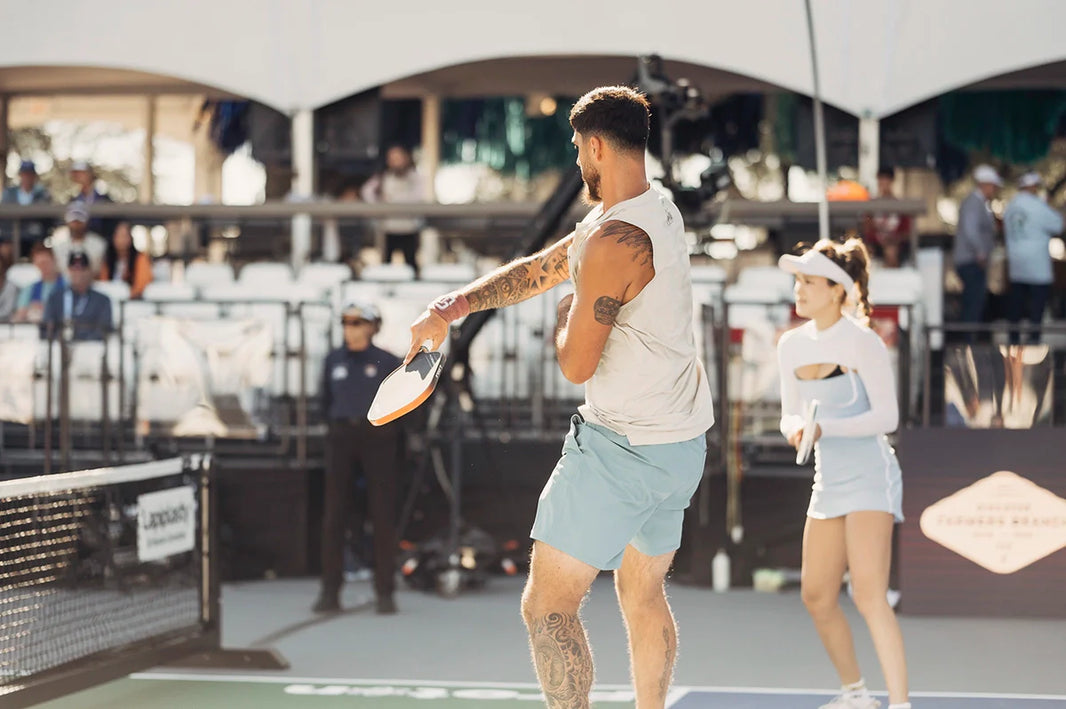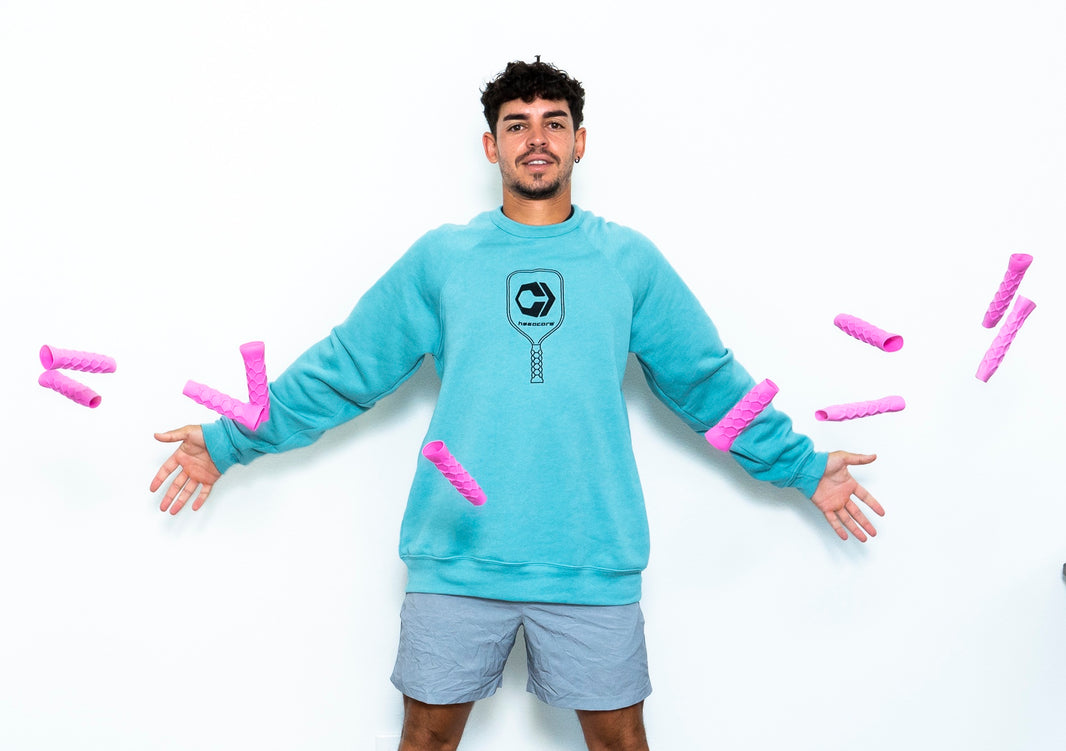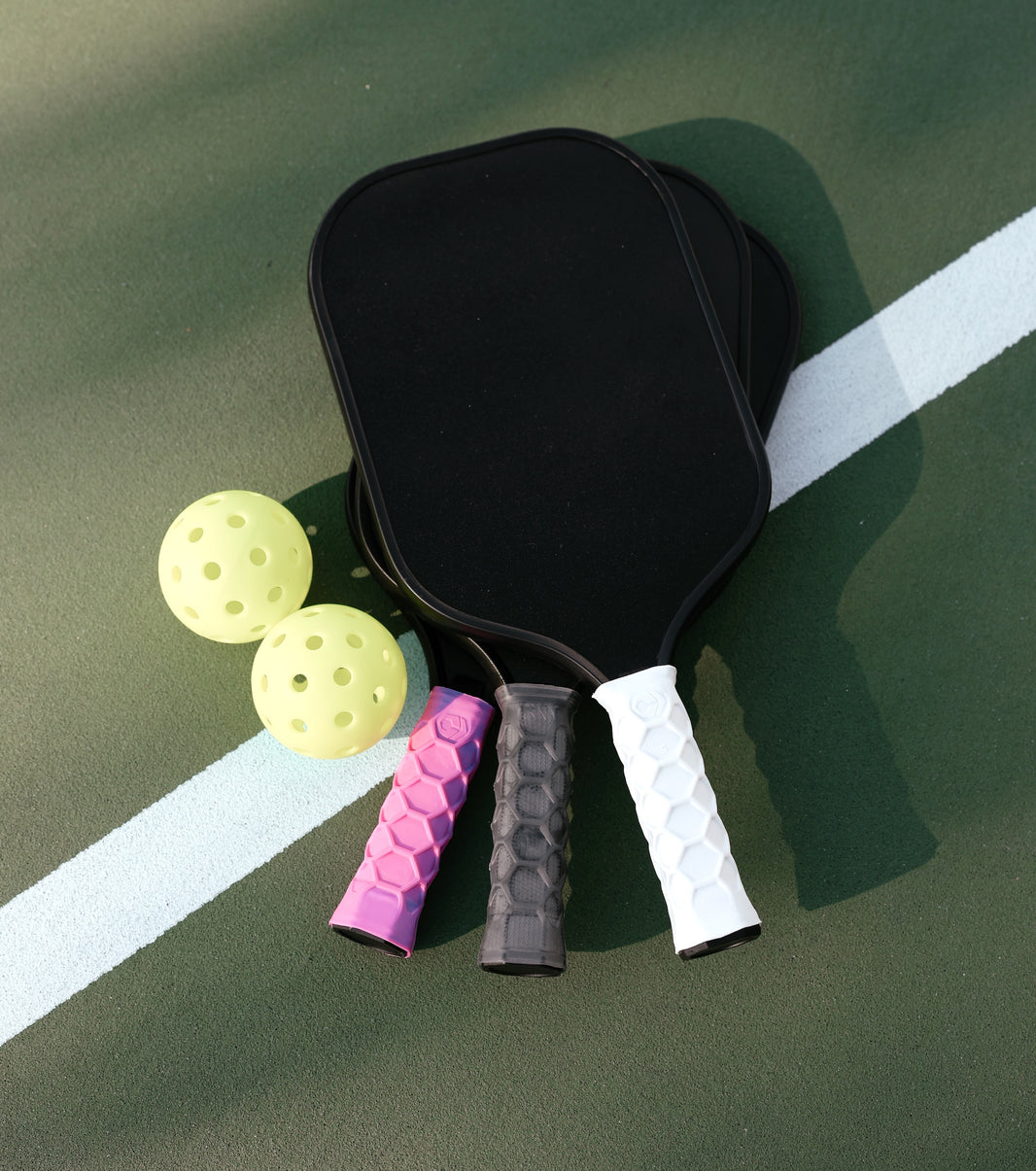Choosing the right pickleball paddle is key to maximizing your performance on the court. With various options based on weight, shape, core material, and surface type, it’s important to understand how these factors influence different aspects of the game. Whether you're a finesse player looking for more control, a power hitter seeking extra punch, or a beginner who wants a versatile option, this guide will help you navigate the key elements to find the paddle that suits your playing style.
1. Weight: The Foundation of Control and Power ⚖️🏋️♂️
Paddle weight is one of the most critical factors to consider, as it directly impacts how the paddle feels and performs in your hand. Pickleball paddles generally range from 6 to 14 ounces.
-
Lightweight Paddles (6-7.4 ounces): Perfect for players who prioritize quick reflexes and control. Lighter paddles allow for faster movements at the net and make it easier to place delicate shots. However, they might not provide enough power for deep baseline drives, requiring more effort from the player.
-
Midweight Paddles (7.5-8.4 ounces): These paddles offer a well-rounded balance between control and power, catering to players who want a versatile option that supports a variety of shot types. Midweight paddles are ideal for those who play an all-around game, offering the ability to switch between touch shots and power plays with ease.
-
Heavyweight Paddles (8.5-14 ounces): Heavier paddles generate more power on contact, making them suitable for players who like to hit with force and aggression. The added weight increases ball speed, especially on smashes, but can cause fatigue over time, especially during extended rallies.
Tip: Players experiencing arm strain or tennis elbow may benefit from midweight paddles, as they provide enough weight to minimize vibration without being overly heavy.
2. Shape: Finding the Perfect Sweet Spot 🏓🔍
The shape of a pickleball paddle affects the sweet spot's size, reach, and how easily the paddle can be maneuvered.
-
Standard Shape: This type of paddle, typically around 8 inches wide and 15.5-16 inches long, offers a balanced sweet spot that works well for most players. It provides a good mix of control and reach, making it suitable for both net play and baseline rallies.
-
Elongated Shape: With a length of up to 17 inches and a narrower width of about 7.5 inches, elongated paddles offer extended reach, which is beneficial for players who like to cover more of the court or have a background in tennis. While this shape gives extra reach for volleys, the narrower face may reduce the sweet spot's forgiving nature.
-
Wide-Body Shape: Wider paddles (8.5 inches or more) have a larger sweet spot, making them ideal for beginners or players who rely on quick exchanges at the net. The extra width offers more control and forgiveness on off-center hits, although it slightly limits reach.
Tip: If you're transitioning from tennis, an elongated paddle may feel more natural due to the added reach. For players new to racquet sports, a wide-body paddle is a great choice for its forgiving sweet spot.
3. Core Material: Understanding the Impact on Feel and Performance 🔬🏓
The paddle's core material significantly influences how it responds to contact, how much power it generates, and how it feels during play. Common core materials include polymer, Nomex, and aluminum.
-
Polymer Core: The most commonly used core material, polymer cores feature a honeycomb structure that provides a soft feel and excellent control. This core type absorbs shock well, making it a quieter option and suitable for players who favor a softer touch or want to avoid irritating conditions like tennis elbow.
-
Nomex Core: This stiffer honeycomb material offers more power and a pronounced "pop" on contact. It is suited for players who enjoy a fast-paced game with aggressive hitting. While it can produce powerful shots, Nomex paddles may feel less forgiving, especially on off-center hits.
-
Aluminum Core: Known for its lightweight design, aluminum cores provide excellent touch and control. These paddles are great for strategic players who emphasize ball placement and finesse over raw power. The softer feel is ideal for dinking and precision play but lacks the power of other core materials.
Tip: Choose a polymer core if you prefer a balanced paddle with a softer touch, or Nomex for a stiffer, more powerful feel. Aluminum is a great option for control-oriented players who prioritize precise shot placement.
4. Surface Material: Maximizing Spin and Durability 🌀💪
The paddle's surface material plays a vital role in how much spin you can generate, how durable the paddle is, and how responsive it feels during play.
-
Graphite Surface: Lightweight and rigid, graphite surfaces allow for a fast reaction time, offering players more control and precision. They are especially useful for players who prioritize a quick response and finesse in their game.
-
Fiberglass Surface (Composite): With a slightly softer feel than graphite, fiberglass surfaces can generate more power and spin. These surfaces are ideal for players who like to mix up their shots with topspin, backspin, and powerful drives.
-
Carbon Fiber Surface: The most durable surface material, carbon fiber offers a high level of control and touch while slightly sacrificing power. It's suitable for players who play a strategic, placement-oriented game.
Tip: If you are a control player, graphite or carbon fiber surfaces will provide the responsiveness and precision you need. If you enjoy applying spin and hitting power shots, fiberglass is a better option.
5. Grip Size and Cushioning: Comfort Meets Control ✋🏓
Choosing the right grip size ensures you have a comfortable and secure hold on the paddle, which affects your ability to control the paddle and avoid injuries.
-
Smaller Grip (4-4.25 inches): Offers better wrist action, making it easier to generate spin. Players who prefer more movement in the wrist or have smaller hands may find this size more comfortable.
-
Larger Grip (4.5 inches or more): Provides stability, ideal for players who want to minimize wrist movement and rely more on forearm strength. This size is suited for players who prefer a firmer, more stable grip.
Tip: If you're unsure, start with a smaller grip and add an overgrip to customize the fit. Cushioning can also reduce shock and vibrations, enhancing comfort during play. Consider pairing your paddle with a Hesacore Grip for an ergonomic feel and additional shock absorption, which can further reduce stress on the arm.
Which Paddle Suits Your Playing Style? 🤔🏆
-
Control-Focused Players: Opt for a lightweight to midweight paddle with a polymer or aluminum core and a graphite or carbon fiber surface. This setup allows for quick reactions, better control, and precision.
-
Power Players: A midweight to heavyweight paddle with a Nomex core and a fiberglass surface can help you maximize power. An elongated shape may offer the reach needed for aggressive baseline play.
-
Beginners: Start with a midweight paddle featuring a polymer core and a wide-body shape. This combination provides a forgiving sweet spot, easy handling, and balanced performance across different types of shots.
Conclusion: Your Paddle, Your Game 🏓🌟
The right pickleball paddle can make all the difference in enhancing your playing experience. By understanding the impact of weight, shape, core, and surface materials, you can choose a paddle that complements your playing style, whether it’s focused on control, power, or versatility. Experiment with different options and consider adding a Hesacore Grip for improved comfort and reduced strain, allowing you to elevate your game with confidence.








